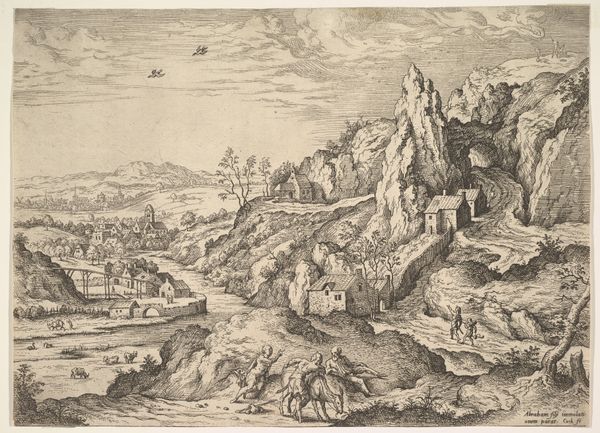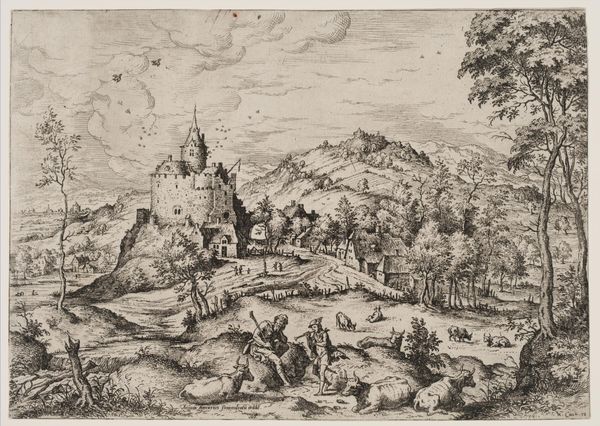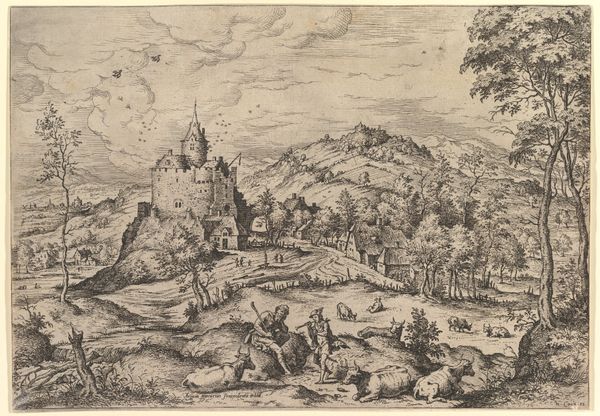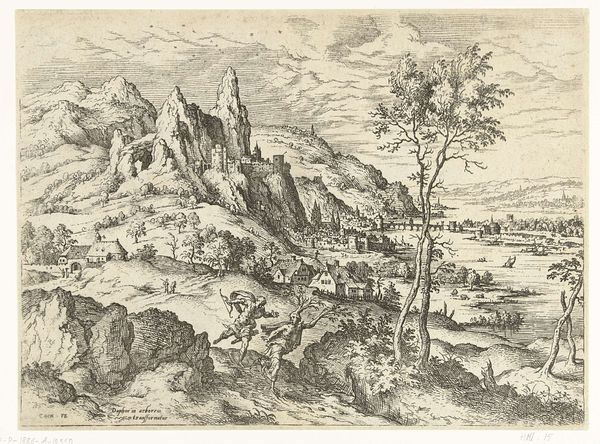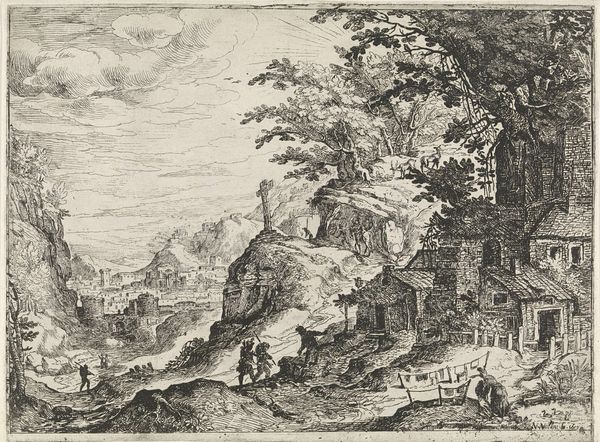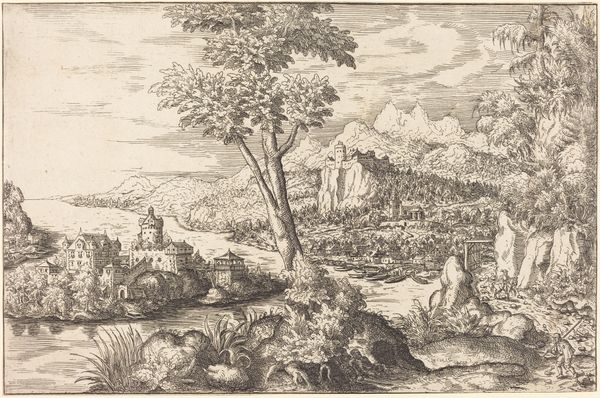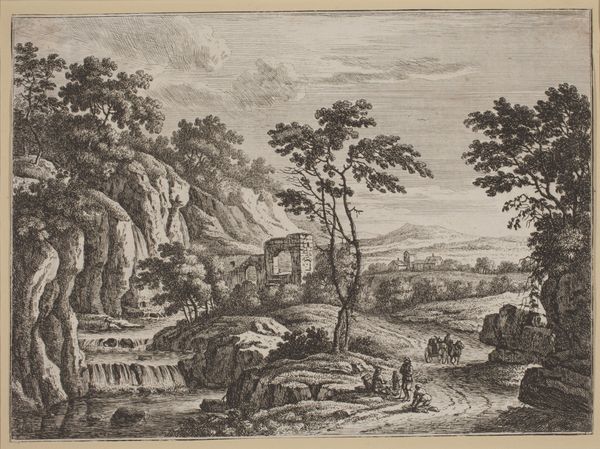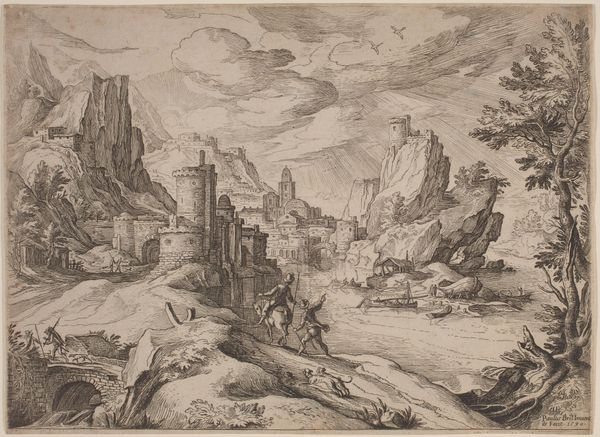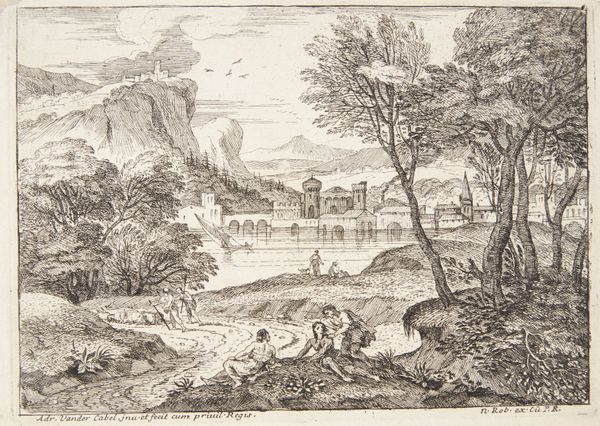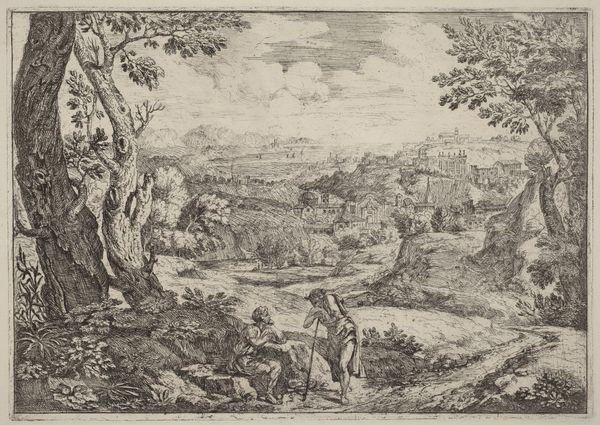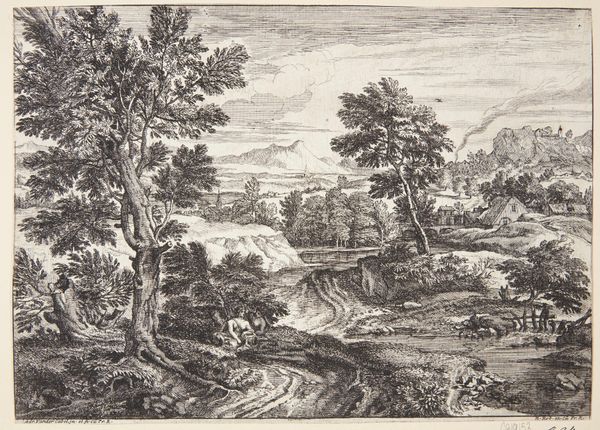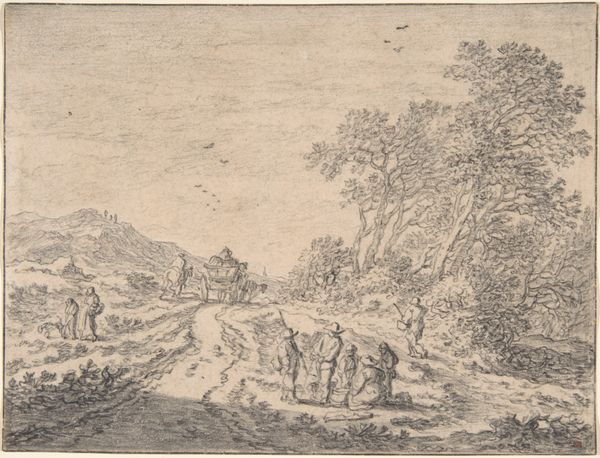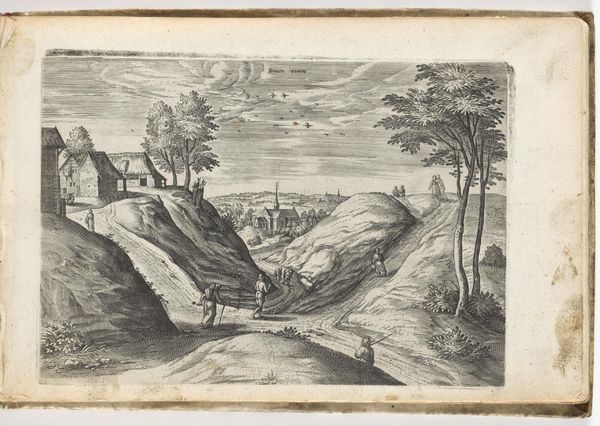
Tobit from Landscapes with Biblical and Mythological Scenes 1558
0:00
0:00
print, etching
# print
#
etching
#
landscape
#
figuration
#
northern-renaissance
Dimensions: Sheet: 9 1/16 x 12 7/16 in. (23 x 31.6 cm)
Copyright: Public Domain
Curator: This etching from 1558, entitled “Tobit from Landscapes with Biblical and Mythological Scenes,” was created by Hieronymus Cock and is currently held at the Metropolitan Museum of Art. Editor: My first impression is the prominence of the landscape. The biblical figures are diminutive, almost swallowed up by the grand vista of mountains and waterways. It has a storybook quality, almost theatrical in its composition. Curator: Exactly, these biblical scenes became a vehicle. I’m interested in how Cock situates the biblical story within a landscape grappling with emergent capitalism and nascent global trade. The journey depicted is both a physical one for Tobit and Tobias, but also a symbolic representation of the individual navigating a complex social and economic landscape. How do we read themes of class and identity within this Northern Renaissance context? Editor: I’m drawn to the architectural motifs—the houses, the fortified castle atop the craggy precipice. What are their symbolic functions? The solid houses seem to speak of prosperity, domesticity. And what about that towering castle, so visibly isolated? Is it a symbol of worldly authority overlooking it all, maybe a slightly sinister force. Curator: This also reflects the anxieties of the period regarding religious and social control. Hieronymus Bosch used these composite creatures as a tool. What narrative control is asserted with an image? What position does that allow within society's power dynamic? Editor: There is a beautiful balance created between nature's raw magnificence and the human symbols, settlements, boats, and the figures. Look at the figures themselves! Are they idealized, like Biblical types meant to be recognizable to the population of the time? Do you think their relationship and purpose meant anything significant back then? Curator: Perhaps. It presents the viewer with both reassurance through a recognizable story, while quietly positioning them within broader socioeconomic forces. This layering is typical of the period and allows the piece to speak on multiple levels. What is visually presented often masked deeper systemic forces. Editor: This visual storytelling provides a glimpse into how people perceived their relationship with the world around them and with the Divine. It's interesting how cultural memory is embedded within this landscape, which acts almost like a stage for a larger cultural play. Curator: Thinking about this piece in terms of performance is extremely useful, understanding its relation to the construction of a socio-historic drama allows insight into that past reality. Editor: Understanding the landscape allows deeper investigation and exploration of how identity develops within cultural stories.
Comments
No comments
Be the first to comment and join the conversation on the ultimate creative platform.
